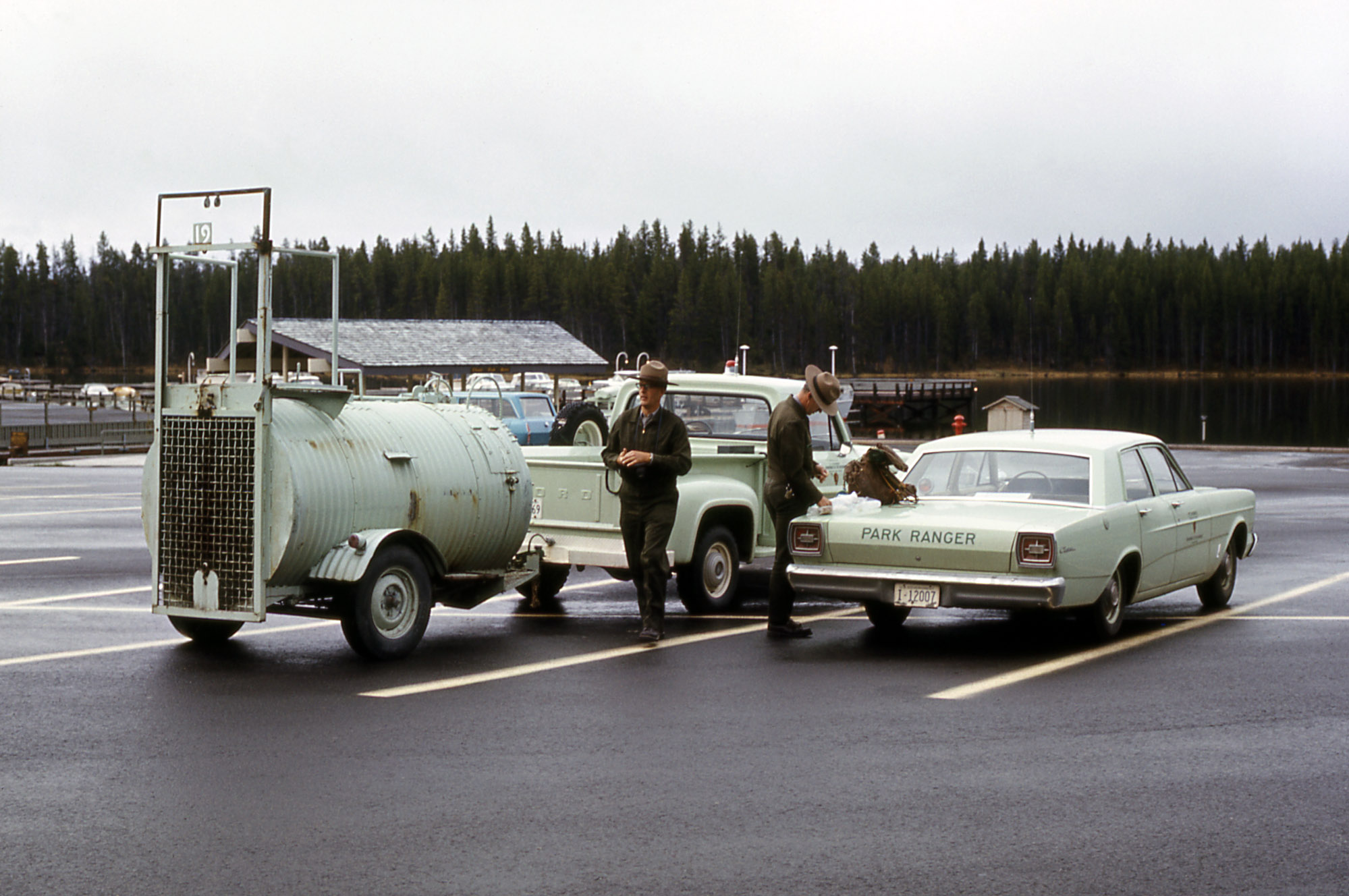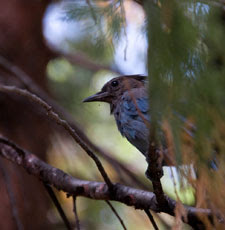There are many myths surrounding bears in Yosemite. This year i set out to discover the truth about bear biology on the west coast. Most people think brown bears call the park and surrounding national forests home. While the bears in Yosemite are indeed more often than not Brown, or chestnut or cinnamon or even a soft tan, they are in fact the same species that we know well in the east - the black bear (Ursus americanus). This certainly sounds like an identity crisis in the making for the little brown furry bear who's actually a black bear.

So why brown?? Their color divergence from the black east coast black bear is an adaptation to the local vegetation - namely conifers such as Ponderosa Pine and Firs that are characterized by red / brown / cinnamon bark. Bears are adept tree climbers so contrary to popular belief, up a tree is not the place to go to get out of a bear's path (yes, they can run - up to 35 MPH or so in short bursts).

The true brown bear species that we know in the US is the grizzly (Ursus arctos) whose population thrives in places such as Yellowstone. The larger, stronger and often more aggressive brown or Grizzly bearwas hunted to extinction in Yosemite in the early 20th century. 
Also, contrary to popular belief, black bears are not generally human-aggressive. No, they don't want to eat you! Get off your high horse, you aren't that special. Bears are opportunistic scavengers and thrive on an omnivore diet that is largely (approximately 80%!) vegetarian. Oh get you some tofu bear! In fact, a majority of their protein comes from food snatched from unsuspecting grocery bearing (get it, bearing??) tourists. (source: bear biologist that i met in the park while watching a bear eat apples!)





They are, however, highly protective of their cubs. Can't say I blame them.
Unfortunately, years of scavenging happy meals, hot dogs and watermelons from "wilderness-seeking" tourists has taught them that breaking and entering can in fact be rewarding. I grew used to hearing:
"bear! run!" camping in Yosemite over the past 2 years. If you hear this in the park, my suggestion is to roll over and continue on with your rest.
The fact remains that if you don't contain your food in a bear box, they WILL try to get it by any means necessary even if this entails breaking into your Yukon Denali with dubs and a moon roof perfect for taking pictures out of as you tour the wilderness in style. Oh yes, all the while stopping in the middle of the road to capture a prized shot of the rare and endangered Mule Deer grazing on grass in the adjacent meadow. nope, no sarcasm here...
If you are backpacking, it's a good idea to carry a bear canister. They're big, clunky, but better add that weight then be left in the middle of the sierra's high and dry. literally. The park is filled with bear boxes. These are metal bins that safely contain food. You can stash food at most trail heads and each official camping site also contains a box. All trash receptacles are also sealed to keep the bears out.

Left: a borrowed NPS bear canister we used to backpacking in the Sierras
Right: My very own bear box at my campsite. I shared it with my neighbors who had atleast 5 watermellons, plentiful hot dogs and multiple cases of beer to stash. You will see these boxes at each designated camp site and all major trailheads.

The park service has a tag system to monitor bear in the park. Each bear, once captured is tagged. Different colors indicate the "nuisance level" of the bear. IE, orange suggests a friendly bear that has been spotted in and around facilities multiple times.

A bear will be tagged post-break in / direct human encounter (car, tent, etc) and relocated elsewhere in the park. Unfortunately, they get only a few strikes (break-ins). You're out translates to R.I.P. mr bear. Sad, but true they are put to sleep. Old school park service bear trap pict below. You'll see newer versions of these, unbaited, around the park.
But wait, there's more
It's no secret that I love this stuff so if you're still reading... I have more, yes MORE to share. I also learned how to spot a bear nest. Pictures are below:

Left: bears clib trees with the assistance of killer claws. Right: bear scat.

A nest! notice the concave form on the ground. There were likely cubs here at one point.
Funny enough, the most popular bear in american culture - Smoky - was the "anti-fire" spokes bear in the middle / later 20th century. An interesting irony considering the now known importance of fire in forest ecosystems. But alas that is another blog to come... this bear's peacin out for now...






.jpg)


2 comments:
Did you take all these bear pictures? Very nice! Yeah...bear names and their body color are really conflicted. I was always wondering if someone will straighten up their names. In my mind, only brown color bears should be called "brown bears" : ) We saw grizzly in Yellowstone and in Glacier national park. It is easy to spot Grizzly because of their humps on their neck. I am afraid of grizzly though - got many bear bells when I was hiking in Glacier. But I know that they always attack with reasons like they got cubs and stuff. Other than that like you mentioned, the bears are mainly vegetarians and they enjoy their quiet life in the woods. Probably they don’t want to have a surprise encounter with humans as much as I hope I don’t collide with them when I hike ( I love to watch them from far).
yea... crazy. there are a few black black bears in yosemite though. they are just rare. most are brown black bears. :) regardless i think i'd rather get a beat down by a bear though then stay at home and not hike or ride! :) i see black bears a lot in the forest on rides. they run.
Post a Comment